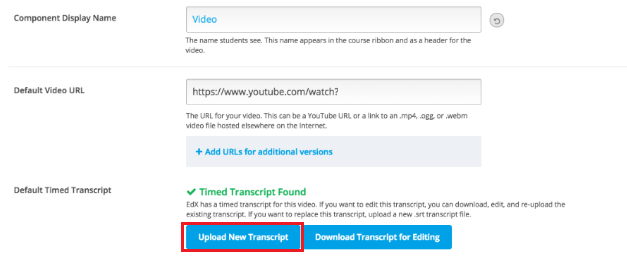Just like any other type of content, it is important that you optimize your website videos for search engines so that they will be indexed and listed. The amount of potential traffic from search engines is too great to ignore, especially as most search engines list videos prominently in their results – with thumbnails to boot.
While a lot of the same basic SEO principles apply to videos such as keywords, metadata, and so on – there are several unique aspects that you will want to also optimize.
Add a Transcript to Same Page as the Video

Basically a transcript is a text equivalent of the audio that the video contains. If you add one to the same page where you publish the video it will give search engine bots more data to scrape and help to contextualize your video for them.
Nowadays there are several ways that you can create a transcript for a video, including some voice-to-text tools that can automate the process. If you do use these tools you should be sure the check the results, as more often than not they aren’t perfect and will require some correction.
On the other hand if you want to go down the manual route it isn’t difficult to learn how to write a transcript. Once you get into the flow it shouldn’t take long for you to transcribe your video fully.
In terms of actually publishing the transcript, typically it is best to place it right below the video. If you’re worried that it will look strange, you could add a collapsible box element to your webpage. That way search engine bots will see the transcript but viewers won’t – unless they want to see it and click on the box.
Overall transcripts can add a lot of SEO value to your videos – and you should definitely make it a point to use them.
Use an Enticing Thumbnail
Search engines try to serve up content that they feel will be relevant to their viewers – so if your video doesn’t get clicks it isn’t likely to rank very high. One of the main factors that determines whether or not your video will be clicked is its thumbnail – as it is one of the first things people will see.
Considering that it should be clear that the thumbnail you use needs to be enticing in order to convince viewers to click and watch your video. Try to select a thumbnail image for your video that is relevant to the keywords that you want to rank on, while at the same time it should be eye-catching, and provide a clear picture of what the video contains.
Most major search engines will let you add thumbnails using the Schema.org markup – and you should take advantage of that fully. In fact, you may want to use other elements of that markup as well.
At the end of the day if your thumbnail convinces more people to play your videos, that will help boost both its SEO as well as its overall effectiveness.
One Webpage, One Video
When you publish videos, try to always just publish a single video on each webpage – no more than that.
If your webpages contain multiple videos, there is a high chance that most of them won’t be listed by search engines. Typically search engines only list the first video that they encounter when they crawl a webpage, and all the rest will go unnoticed.
As far as most search engines are concerned a video is meant to be the focus of the webpage that it is on – and should be given priority. If there are multiple videos on a webpage and viewers have to scroll to find the one they want it isn’t ideal, which is why search engines frown on it.
All said and done this is arguably one of the easiest ways to boost your SEO, and all you need to do is make sure that you dedicate a webpage to each video.
Create Engaging Videos
While optimizing SEO is important, creating engaging videos is arguably more important. Simply put engaging videos will attract and interest viewers will prompting them to react and share the videos as well.
From an SEO standpoint that will provide benefits as well, as it will improve the play rate of your videos while reducing bounce rates. In short you’ll end up killing two birds with one stone – both of which will increase the relevance of your videos in the eyes of search engines.
There are numerous ways to make sure your videos are more engaging, but as a place to start you could create shorter videos, place a hook in the first few seconds, use emotional triggers, and add subtitles. Additionally you should try finding topics and types of videos that viewers find interesting in general, and base ideas on them.
Considering SEO tends to evolve with every passing year, focusing on creating engaging videos is really the best way to futureproof your SEO. At the end of the day if viewers find your videos engaging, search engines will want to list and rank it well to provide viewers with what they’re looking for.
Conclusion
Make no mistake there are lots of other aspects of video SEO that you may want to look into, and ample resources online that could help you out. If you want you could even use Movavi Screen Recorder to record streaming video so that you can refer to any useful videos whenever you want.
That being said now that you know some of the important areas of video SEO that are unique you should be able to start optimizing for search engines much better. If you start to use everything listed above you should be able to notice a marked increase in the search engine rankings of your videos as they begin to be listed.
If you keep improving your video SEO, you may even rank high up on some popular keywords.

